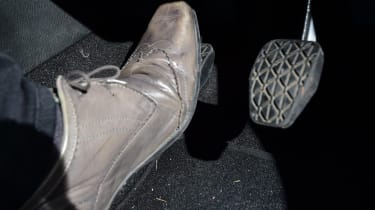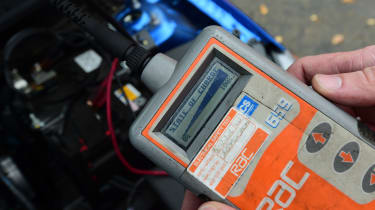How to avoid a flat car battery
Car batteries can go flat for a number of reasons, which is why we have gathered these top tips to help prevent the worst happening

A flat battery can be a massive inconvenience, especially on dark winter mornings. Dead batteries are also one of the most common causes of breakdown callouts during the winter in the UK.
One of the main problems is that the cold winter weather has an adverse effect on batteries, slowing down the chemical processes that occur within, which makes them particularly susceptible to losing charge in winter.
However, you can avoid the problem by regularly maintaining the battery, as you would with many other standard car components. This is why we have created this guide on the best ways to avoid a flat car battery.
1. Keep driving
Batteries are subjected to peak strain when doing a high number of short journeys, as the engine and alternator are not given enough chance to recharge the battery to its previous state. Try to do some longer journeys to give the car a chance to recharge itself. Alternatively, invest in an external battery charger.
2. Switch off
Modern cars are packed with energy sapping technology, which, if left on, will work to drain the battery very quickly. Lights and heaters are the biggest threats for flattening a battery, however items plugged into a USB or 12V supply will also quickly drain the battery’s charge. Check your interior lights, too - leaving them on overnight could be a costly mistake.
3. Ease the strain
Depressing the clutch when starting the engine can help take the strain off your car. It reduces the effort needed to start, and therefore takes away some of the load on the battery.

4. Check your battery
You can do a visual check every time you lift the bonnet to look for corrosion, but it’s worth getting a professional inspection, too. If you’ve bought a used car, check the manual and make sure the previous owner had the correct battery installed. If the current battery is corroded or an incorrect fit, a replacement should prove a worthy investment.
5. Check other battery-related systems
If you’re concerned, get a professional to check over the alternator, starting system and charging systems for the car and battery. If any of these are malfunctioning, it could result in the battery being overcharged, undercharged or in some cases not charged at all – all of which will affect battery life.
6. Service your car
A poorly maintained vehicle can put extra strain on the battery. Also, if you have a garage, keep your car in it; warmer temperatures are better for batteries.
7. Know the warning signs
Noises like clicks as you turn the ignition, dashboard lights going dim or the engine turning over very slowly are all signs of low or zero battery charge.

8. Don’t persevere
A battery won’t magically regain charge; if it fails to start the engine, stop trying, as you’ll only flatten it further for no reason. Completely flattening a battery damages it.
9. Safety first
If you’ve conked out in a dangerous place – next to a junction, for example – try to get the car somewhere safer before continuing. If you have one, place a warning triangle 50 metres behind the car, to warn other drivers, because if the battery is flat, your hazard warning lights may not operate. You may need to push the vehicle to safety.
10. Be ready to jump start
If your battery is dead, you may need to jump start the car. Keep a set of jump leads in the car at all times and learn the procedure. Alternatively, invest in a compact battery booster pack, which can do the same job without the need for another vehicle.
Best winter cars
| • Best electric SUVs to buy now | • Best SUVs to buy now |
| • Best crossovers to buy now | • Best small 4x4s to buy now |
Get ready for winter on the roads
Top tips for winter driving
Find a car with the experts




